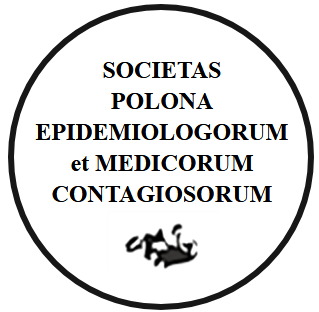PRACA ORYGINALNA
The spectrum and outcomes of cardiac disease in pregnancy: A retrospective cohort study
1
Department of Cardiology, Alzahra University Hospital, Isfahan University of Medical Science, Isfahan, Iran
2
Department of Obstetrics and Gynecology, Isfahan University of Medical Sciences, Isfahan, Iran
3
Department of Cardiology, Isfahan University of Medical Sciences, Isfahan, Iran
Data nadesłania: 29-03-2025
Data ostatniej rewizji: 24-08-2025
Data akceptacji: 12-09-2025
Data publikacji online: 30-09-2025
Data publikacji: 12-12-2025
Autor do korespondencji
Parvin Bahrami
Parvin Bahrami M.D Assistant Professor, Department of Cardiology, Alzahra University Hospital, Isfahan University of Medical Science, Isfahan, Iran
Parvin Bahrami M.D Assistant Professor, Department of Cardiology, Alzahra University Hospital, Isfahan University of Medical Science, Isfahan, Iran
Przegl Epidemiol 2025;79(3):370-378
SŁOWA KLUCZOWE
pregnancycardiovascular diseasevalvular heart diseasecardio-obstetricsmultidisciplinary maternal care
DZIEDZINY
STRESZCZENIE
Background: Cardiovascular disease (CVD) complicates pregnancies worldwide and remains a major contributor to maternal mortality, particularly in low- and middle-income countries (LMICs). Objective: This study aimed to evaluate the prevalence, clinical profiles, and outcomes of heart disease (HD) among pregnant women referred to the Joint Clinic of Pregnancy and Heart Disease at Al-Zahra Hospital and assess the utility and limitations of the modified World Health Organization (mWHO) risk classification system. Material and methods: We analyzed a retrospective cohort of 389 pregnant women with confirmed heart disease managed at the Joint Clinic of Pregnancy and Heart Disease, a tertiary referral center, Al-Zahra Hospital (Isfahan, Iran), between March 2017 and March 2023. Participants were followed until hospital discharge after delivery or pregnancy termination. Patients were stratified into mWHO risk classes and categorized by disease type, including congenital heart disease (CHD), valvular heart disease (VHD), cardiomyopathy, and other conditions. Clinical outcomes, including maternal mortality, abortion and delivery methods were examined. Results: VHD was the most prevalent condition (35.99%), followed by CHD (20.82%). Severe mitral stenosis and prosthetic heart valves were the most common VHD subtypes. Among CHD cases, atrial septal defect was predominant. Class IV mWHO patients comprised 21.85%, highlighting the high-risk population. Cesarean deliveries were common (53%). Maternal mortality was 1.0%, with four deaths mostly due to pulmonary hypertension. Conclusions: The observed outcomes in this high-risk cohort compare favorably to those reported in similar LMIC settings, suggesting that structured multidisciplinary care and mWHO-based risk assessment may contribute to improved maternal and fetal management. However, overlapping and unclassified conditions highlight the need to refine current risk stratification frameworks for pregnancy in cardiac patients.
Udostępnij
ARTYKUŁ POWIĄZANY
Przetwarzamy dane osobowe zbierane podczas odwiedzania serwisu. Realizacja funkcji pozyskiwania informacji o użytkownikach i ich zachowaniu odbywa się poprzez dobrowolnie wprowadzone w formularzach informacje oraz zapisywanie w urządzeniach końcowych plików cookies (tzw. ciasteczka). Dane, w tym pliki cookies, wykorzystywane są w celu realizacji usług, zapewnienia wygodnego korzystania ze strony oraz w celu monitorowania ruchu zgodnie z Polityką prywatności. Dane są także zbierane i przetwarzane przez narzędzie Google Analytics (więcej).
Możesz zmienić ustawienia cookies w swojej przeglądarce. Ograniczenie stosowania plików cookies w konfiguracji przeglądarki może wpłynąć na niektóre funkcjonalności dostępne na stronie.
Możesz zmienić ustawienia cookies w swojej przeglądarce. Ograniczenie stosowania plików cookies w konfiguracji przeglądarki może wpłynąć na niektóre funkcjonalności dostępne na stronie.




